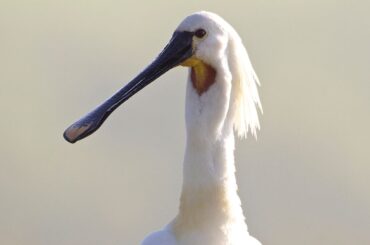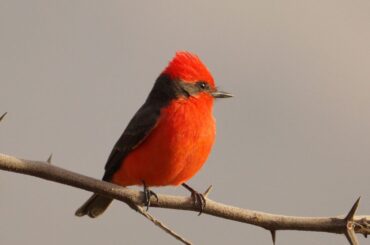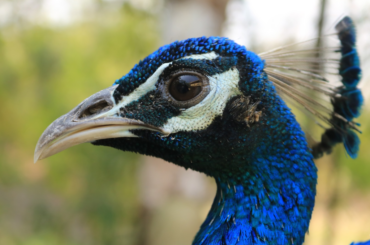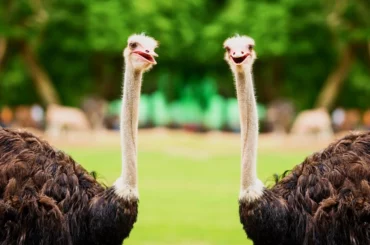Ever wondered about the enchanting world of green birds? What makes these feathered creatures so uniquely vibrant and fascinating? What makes their green colors unique, and how do they survive in their surroundings?
In the Amazon Rainforest, a striking parrot is called the Amazonian emerald. With its bright green feathers, it gracefully moves through the thick foliage. Its vibrant plumage helps it hide among the leaves, providing excellent camouflage.
This fantastic sight offers a glimpse into the fascinating lives of green birds. Their beauty is not just for show; it plays a crucial role in helping them survive. Come with us as we explore the secrets behind the captivating colors of these remarkable winged creatures.
We aim to uncover the stories of 15 unique green bird species, each with charm and ecological importance. From the stunning quetzal in the cloud forests to the nimble green broadbill of Southeast Asia, we’ll explore the various habitats and behaviors that shape these birds’ lives.
This article guides nature enthusiasts into the diverse world of green avian wonders. Get ready to marvel at the elegance of these birds in nature’s colorful palette.
Why are Some Birds Green?

The beautiful green colors in bird feathers come from a clever mix of pigments and light. Unlike mammals, birds don’t rely only on melanin for their colors. Instead, they use structural coloration.
Feathers have tiny structures, such as barbs and barbules. These structures interact with light waves, bending and reflecting specific colors.
For green, it often happens because of how blue light scatters and yellow pigments absorb other colors. This scientific dance creates vibrant green shades in the feathers of many bird species.
The development of green feathers isn’t just about looks; it’s a smart adaptation. In dense forests or lush vegetation, green acts as natural camouflage. Birds such as the green jay and the quetzal use their green colors to blend in. This makes it difficult for predators to spot them and care for their chances of survival.
This advantage is not just for show; it’s a survival strategy passed down through generations. Green color often signals particular diets, such as those rich in fruits. It serves as an indicator of a bird’s health and adaptability in its environment.
When you appreciate birds that are green, keep in mind it’s not just about appearance. It’s a finely tuned adaptation crafted by evolution.
15 Types of Green Birds
Let’s pause to admire the varied colors of nature before exploring 15 unique green bird names. Each of these birds possesses its unique charm and ecological significance. They invite us into their enchanting worlds with their vibrant colors.
Parakeets
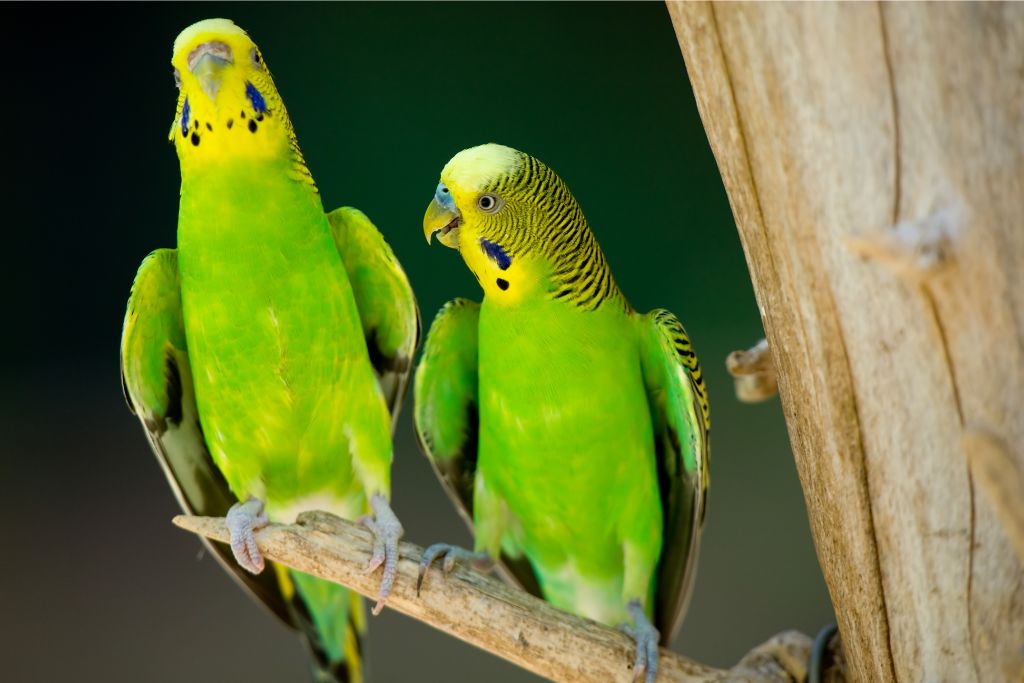
Parakeets have bright feathers and slender bodies. They showcase a vibrant mix of greens and yellows, with occasional touches of blue. Their small size and smooth feathers make parakeets adept fliers. Their colors are both a show and camouflage in leafy environments.
These birds are not just pretty; they have a diverse diet, eating seeds, fruits, and leafy greens. They form monogamous pairs during breeding, showing a strong sense of partnership. Nesting in tree hollows, these pairs care for their eggs and chicks.
Conservation statuses vary for different parakeet species. Some, like the budgerigar, do well in captivity and the wild. Others face threats from habitat loss and illegal trade. Conservation efforts are essential to protect their habitats and ensure sustainable breeding populations.
Their species are adaptable and can be found in various environments. They thrive in different environments, from South America’s tropical rainforests to Australia’s arid landscapes. They adapt well to diverse ecosystems.
In forests, they play a vital role in spreading seeds and helping plants grow. Their nimble feeding habits contribute to the forest’s health by controlling insect populations.
Lorikeets
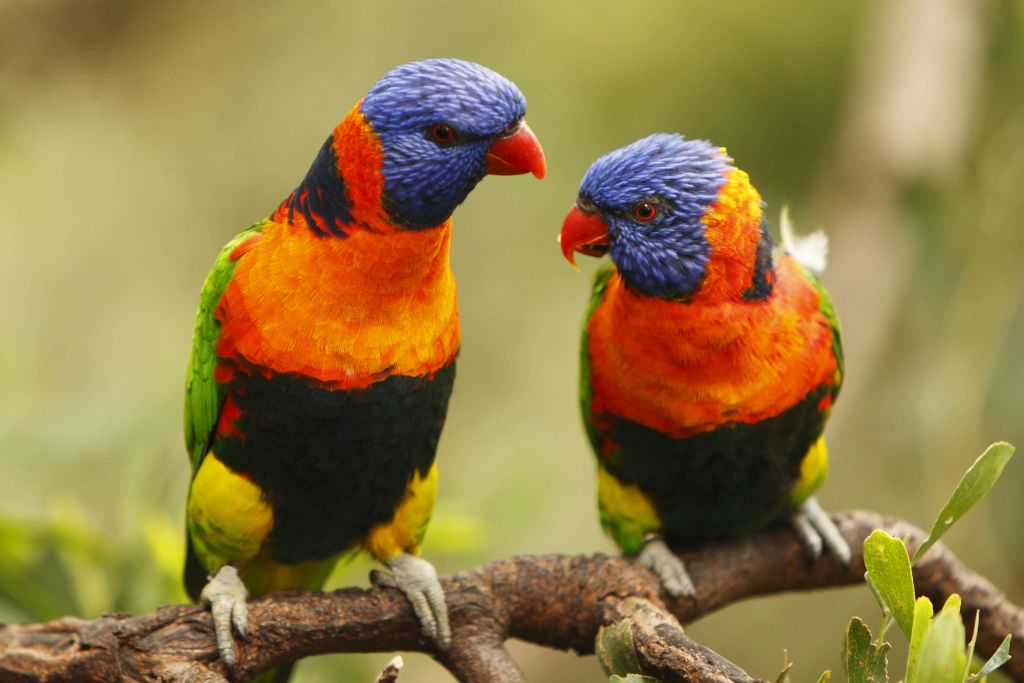
Lorikeets, with their bright and varied colors, are like a lively kaleidoscope in the sky. Their feathers display vibrant shades of red, blue, orange, and green. One unique trait is their particular brush-tipped tongues. It is designed for extracting nectar from flowers. Their slim bodies and colorful feathers turn them into aerial artists.
Looking into their lifestyle, lorikeets love sweet nectar, pollen, and soft fruits. Their particular tongues make them expert pollinators.
Regarding breeding, lorikeets engage in elaborate courtship displays, strengthening their bonds. They nest in tree hollows and take great care in raising their young.
Conservation-wise, some lorikeet species are thriving. Others face challenges due to habitat loss and human activities. The varying conservation status emphasizes the need for focused efforts to ensure their survival.
This species is adaptable and found in Australasian rainforests, coastal areas, and cities.
In forests, they’re crucial pollinators, helping flowering plants reproduce. Their flying and feeding habits also help spread seeds, supporting the forest’s growth.
Quetzals
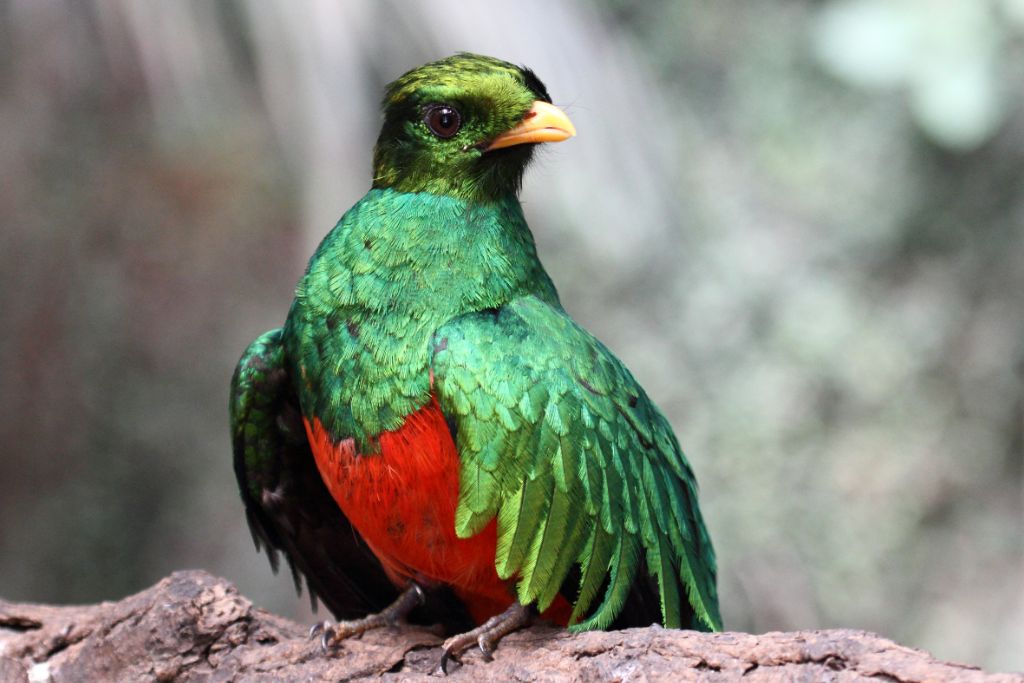
Quetzals have stunning emerald-green feathers and long tail feathers, representing avian elegance. The males especially display a lively palette with red, blue, and gold touches. Their distinct crests and shiny feathers enhance their majestic presence in the dense canopies.
In terms of food, quetzals favor a rich diet, enjoying fruits such as avocados and figs. In breeding, they are committed partners, participating in elaborate courtship displays.
Nesting in tree holes, quetzal parents put dedicated effort into raising their chicks. Conservation-wise, they face challenges due to habitat destruction and climate change.
These birds live in cloud forests in Central and South America. They are found from Mexico to Panama, with different species living in specific areas.
In the woods, quetzals are essential for spreading seeds and helping plants grow. They influence insect populations, maintaining a delicate ecosystem balance.
Green Honeycreeper
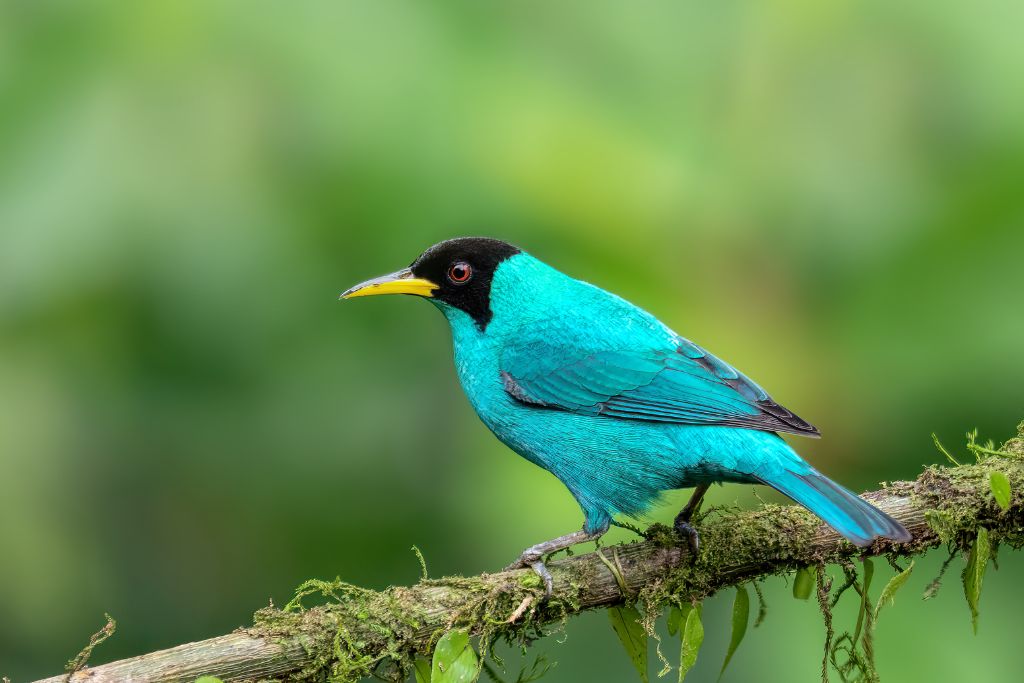
The green honeycreeper is known for its vibrant emerald feathers and slim body. These tiny birds have an electric green plumage covering their entire body. What sets them apart is the contrast between their brightly colored bodies and the black mask-like markings around their eyes.
This bird feeds on nectar, using their specialized bills to sip from flowers. In addition to nectar, they eat fruits and insects.
During the breeding season, usually in the rainy season, they display interesting courtship behaviors. The male green honeycreepers have bright green feathers. They do fancy dances and make sounds to get the attention of possible mates.
Unfortunately, the green honeycreeper faces challenges to its existence. This is because of habitat loss, and the places it lives are getting divided. This has led to their classification as a species of “Least Concern” on the conservation status scale.
They live in areas from Southern Mexico to Western Panama, mainly in warm, lowland forests. They’re essential because they help make new plants by moving pollen around. This helps keep the forest healthy and diverse.
Green Turaco
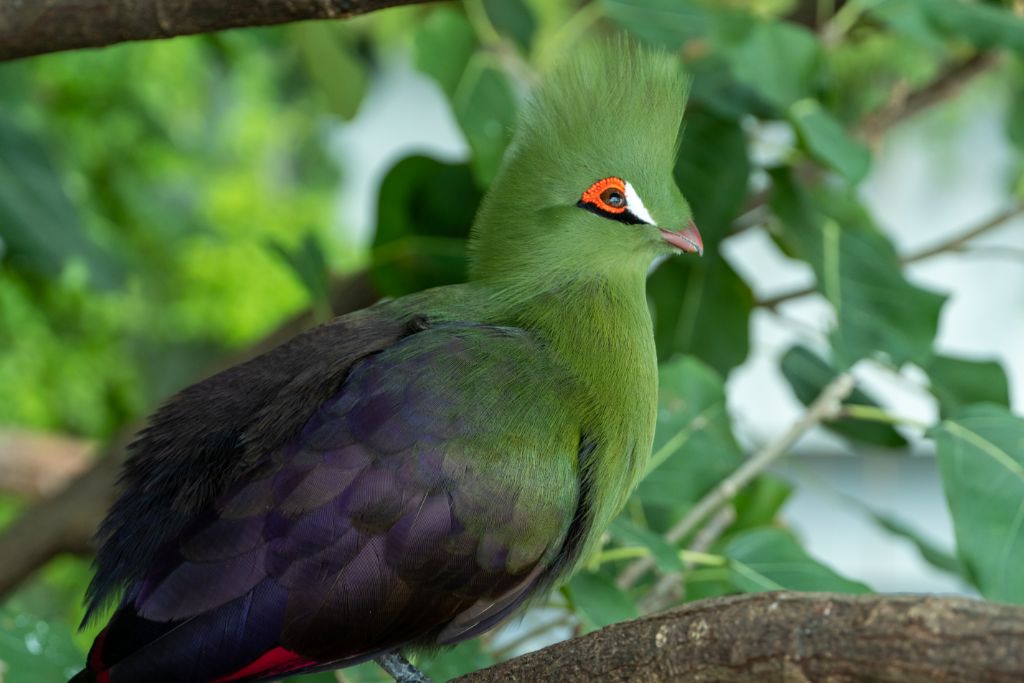
The green turaco is a captivating bird found in the forests of sub-Saharan Africa. It has vibrant green feathers and a striking red-and-white facial pattern. The long tail feathers, often tipped with white, enhance its regal appearance.
They primarily enjoy a fruit-based diet, especially liking figs and other forest delicacies. Their role as seed dispersers is vital for the ecosystem, helping plants grow.
With both parents actively tending to their chicks, these birds develop monogamous partnerships. Perched in the treetops, their nests are carefully crafted platforms.
The species is threatened by habitat loss from deforestation and the pet trade. Conservation efforts are in progress to protect their natural homes and ensure the survival of this splendid species.
Green Jays
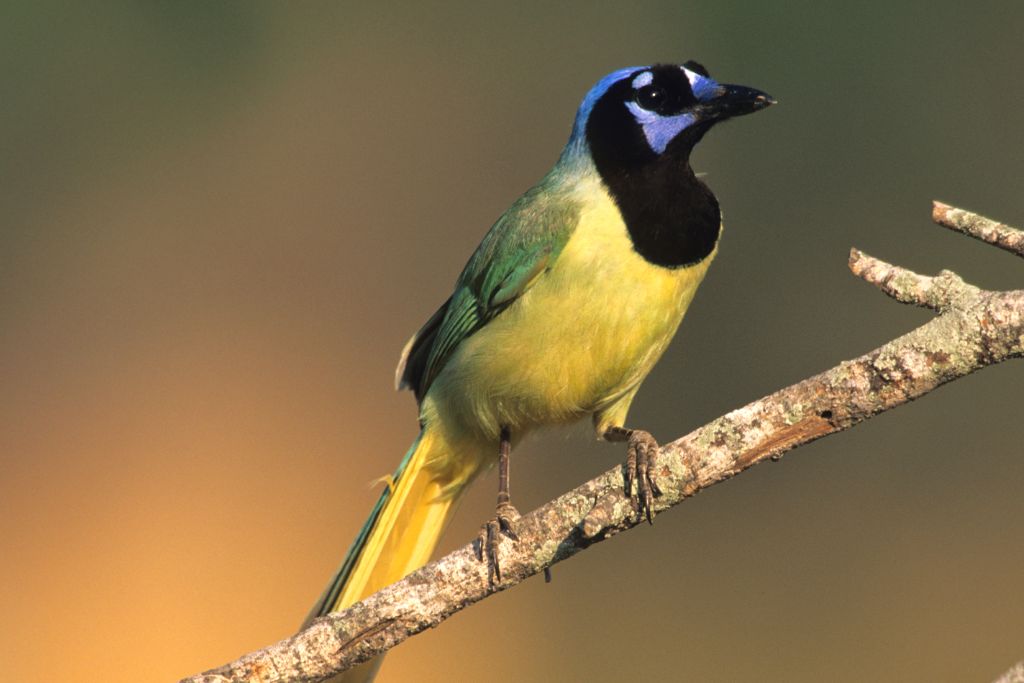
Green jays stand out with their stunning emerald-green feathers and contrasting black markings. Their colorful feathers, with touches of yellow, make a striking display among the leaves. Their muscular physique and clever gaze make green jays captivating to look at.
In the wild, these birds exhibit culinary expertise by consuming a diverse range of fruits, insects, and small creatures, showcasing their adaptability to forest environments through their omnivorous diet.
When it comes to making homes and raising their chicks, green jays are team players. They build fancy nests together and take good care of their babies, showing a strong family bond.
Despite their adaptability, they encounter conservation challenges due to habitat loss and climate change.
These feathered creatures live in Central and South American forests, from Mexico to Honduras. These birds are important because they spread seeds around, helping plants grow. They eat insects to control the bug population and maintain environmental balance.
Green Cheek Conures
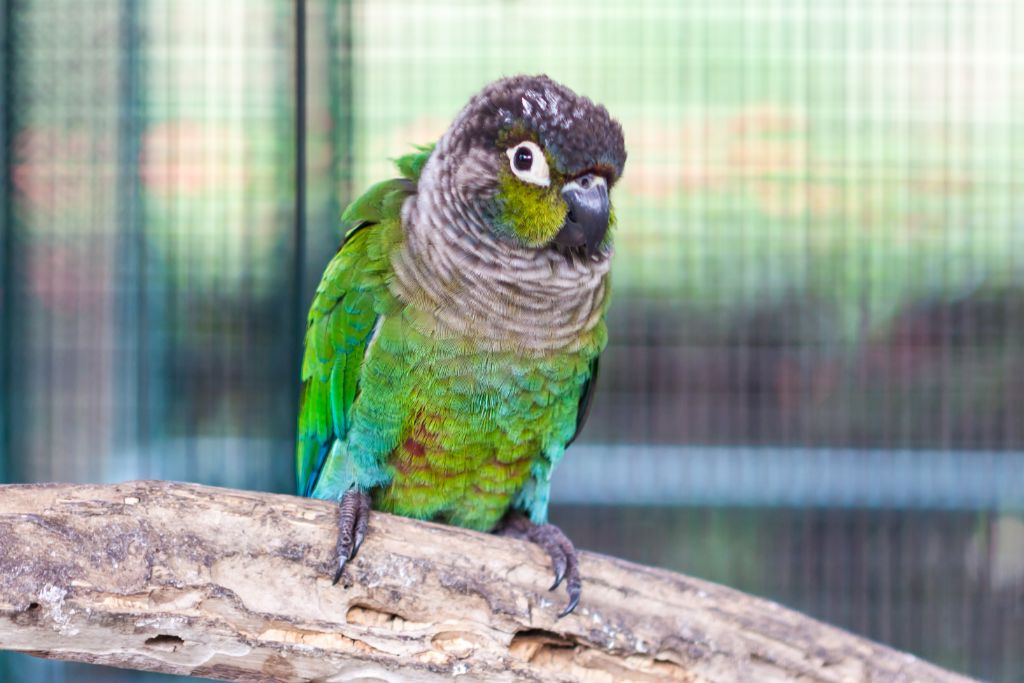
Green cheek conures are gorgeous birds with green, red, and blue feathers. They’re also called “Crimson-Bellied Conures” because of their red foreheads. These small parrots are not only beautiful but also playful and curious. They have a compact body and a long tail that makes them even more charming.
These species of conures maintain a diverse diet consisting of fruits, vegetables, nuts, and formulated pellets.
When it comes to breeding, these birds are known for forming strong monogamous pairs. Nesting in tree hollows, they care for their clutch of eggs, showcasing remarkable parenting skills.
In terms of conservation, these conures are currently listed as a species of “Least Concern.” However, deforestation and habitat loss pose potential threats.
Originating from South America, particularly in areas like Brazil, Bolivia, and Argentina, these birds are native to the region. They play a crucial role in forest ecosystems. Thriving in tropical and subtropical forests, they disperse seeds by consuming various fruits.
Green Aracari
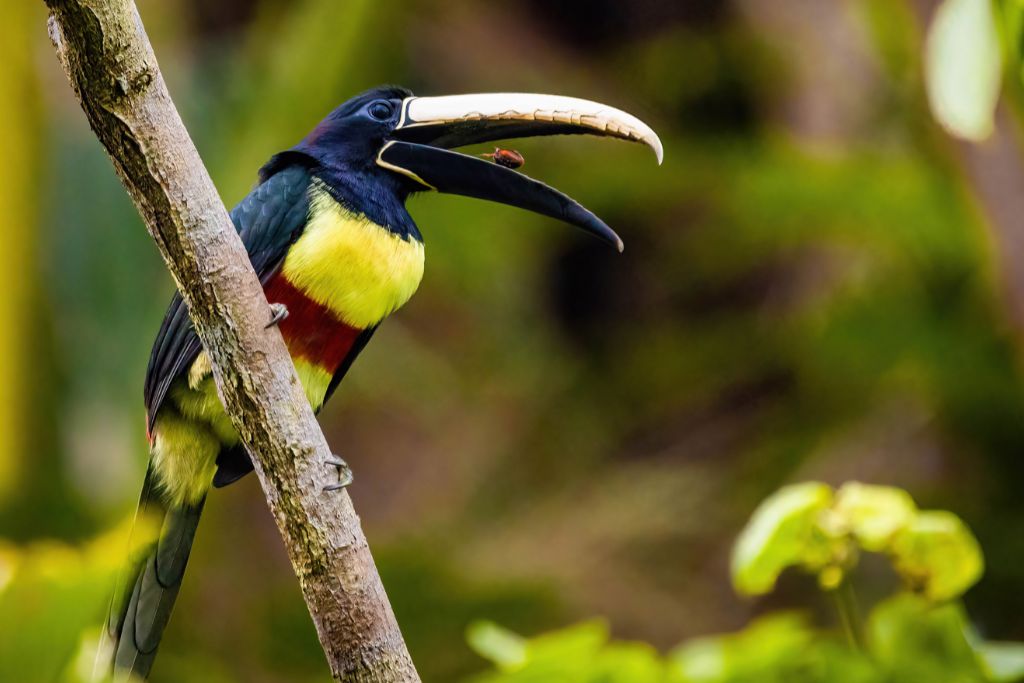
The green aracari is a stunning bird with a unique and eye-catching appearance. Its small body is covered in bright emerald-green feathers, and a hint of yellow adds to its beauty. The bird’s long bill is a mix of vibrant orange, yellow, and black. To complete its tropical charm, the green aracari has a bicolored tail that adds an elegant touch.
The dietary preferences of this bird are diverse, as they relish a combination of fruits, insects, and small creatures. When it’s breeding season, they establish their nests within tree hollows. The female lays a small group of eggs, and both parents keep them warm. Their commitment continues as they actively feed and care for the chicks.
Their species is found in the rainforests of Central and South America and plays a crucial role in keeping the environment in balance. These birds are known as frugivores. They help spread seeds, which supports the growth of new plants in the forest.
Their active foraging habits also help control insect populations. It prevents imbalances that could disrupt the delicate ecosystem. Sadly, the green aracari faces threats of losing its home due to habitat destruction and the breaking up of its living spaces.
Green Broadbill

The green broadbill stands out with its unique appearance. Covered in bright green feathers, it has a wide and flat beak, giving it a one-of-a-kind look. With a black face mask that contrasts, the green broadbill becomes a fascinating presence in the varied world of birds.
When it comes to food, the green broadbill sticks to a special diet, mainly eating insects. During the breeding season, they build nests on the outer branches of trees. The female lays a few eggs, and both parents work together to care for the little ones.
Even though the green broadbill is captivating, it’s facing conservation issues due to habitat loss and fragmentation. This makes it essential to focus on protecting where they live.
Over Southeast Asia, the green broadbill is crucial in forest ecosystems. As insectivores, they contribute to pest control. They help maintain a healthy balance in the forest. Their distribution covers various forest types, from lowland rainforests to mountainous regions.
Green Magpie
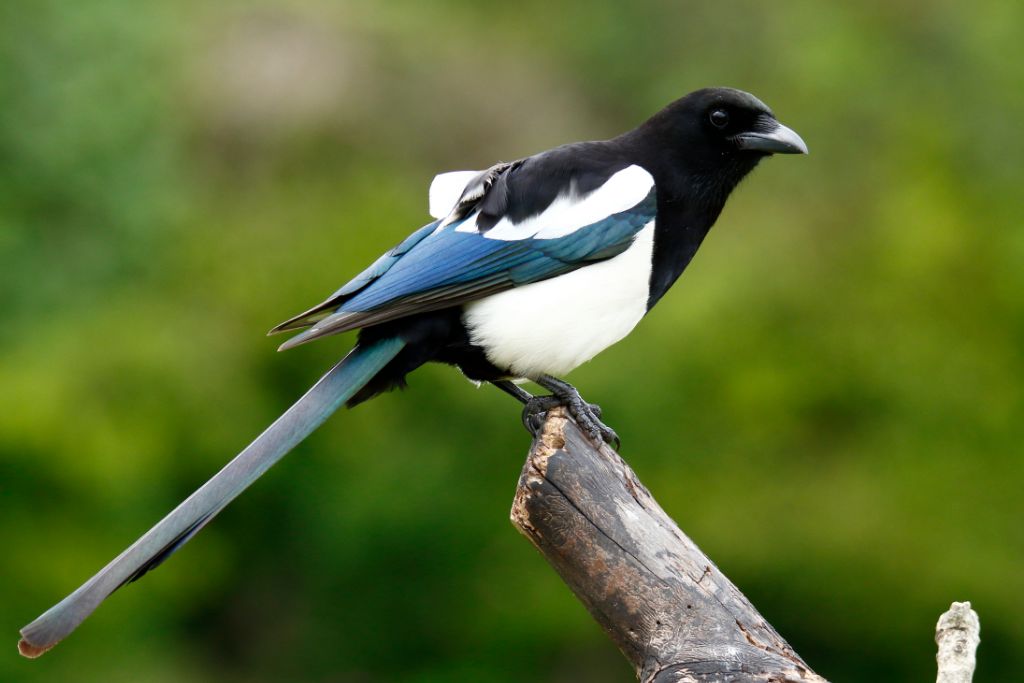
Green magpies, draped in vibrant emerald feathers, are mesmerizing birds. Their lush green shades catch the sunlight, forming a captivating display that draws everyone’s gaze. These birds are adorned with contrasting black markings on their wings and tails.
These feathered gems are opportunistic omnivores. They enjoy a mix of insects, small animals, fruits, and seeds. Their breeding season typically aligns with the warmer months. Green Magpies show a remarkable commitment to family life. They carefully build nests, often perched in the dense foliage of trees.
In terms of conservation, the green magpie is under threat. This is mainly because of habitat loss. Additionally, there’s a risk from illegal pet trade. It’s essential to address these issues to ensure the green magpie can continue thriving.
Species belonging to them thrive within the verdant woodlands of Southeast Asia, spanning nations such as Malaysia, Thailand, and Indonesia. They play a crucial role as both hunters and seed spreaders. By eating insects and small animals, green magpies help keep their habitat balanced. At the same time, their munching on fruits and seeds helps the forest regrow.
Green Parrotlets
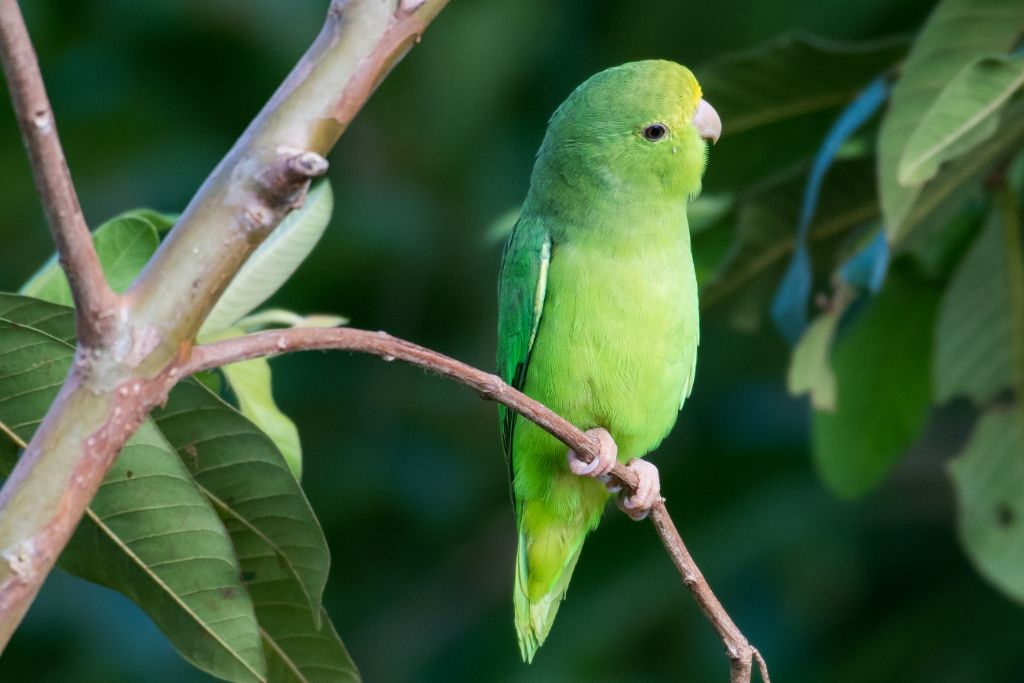
The green parrotlets sport a vibrant emerald-green feather coat that shines brightly. These small parrots also have a hint of delicate yellow on their heads, creating a charming mix of colors. Despite their tiny size – usually around 5 inches – they capture attention. They have remarkably slim beaks and dainty feet.
Feeding on a diverse diet, green parrotlets enjoy a mix of seeds, fruits, and the occasional treat of small insects. In the realm of breeding, these birds exhibit a fascinating commitment. They find tree hollows to make nests. Both parents play an active role and work hard to care for their chicks.
When considering conservation efforts, green parrotlets encounter difficulties arising from habitat depletion and their capture for the pet industry. Conservation efforts are crucial to sustain their populations.
The lush tropical forests of South America host their species, residing in areas such as Ecuador and Peru, where they play a crucial role in maintaining environmental balance. When green parrotlets look for food, they unintentionally spread seeds. This helps in regenerating plant life.
Green-Headed Tanager
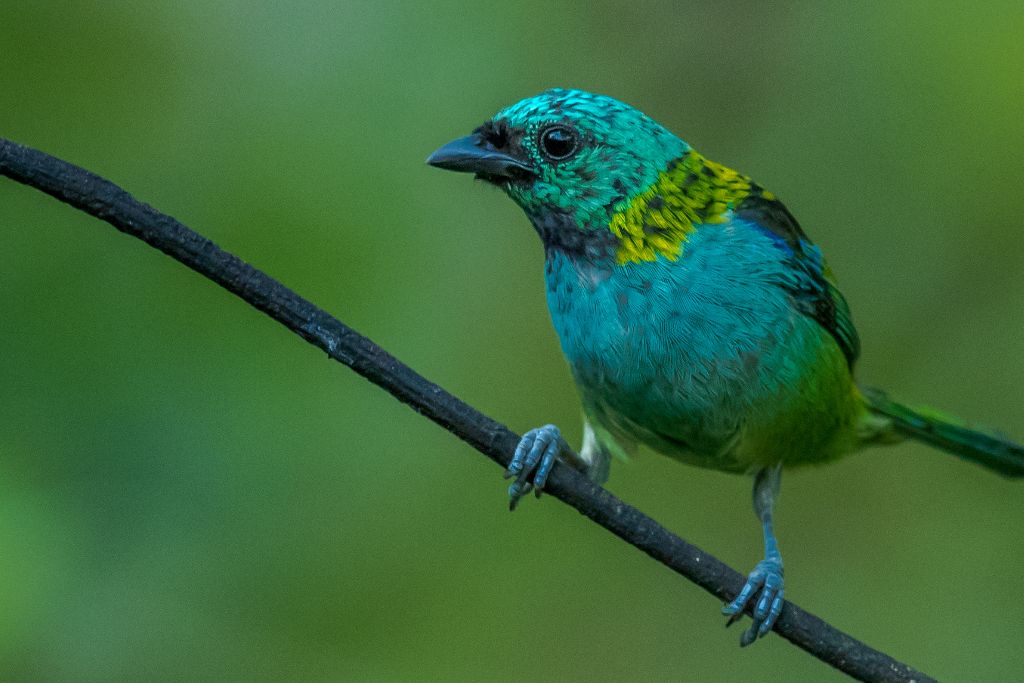
Wearing an emerald crown, the green-headed tanager shines brightly in the bird community. Their vivid green feathers on their heads make them easy to spot in the dense canopies where they live. With slim bodies, they sport a mix of blue, yellow, and black feathers.
These vibrant birds aren’t fussy eaters, enjoying a mix of fruits, insects, and seeds. In the breeding season, green-headed tanagers put on lively courtship displays. The males play a starring role, showing off their vibrant plumage. It’s like a colorful performance to attract a mate. Their well-made nests, carefully hidden in the leaves, are a vital part of their family life.
Despite their lively nature, these birds are at risk due to human activities like deforestation and habitat loss.
Green-headed tanagers roam freely in South American rainforests, flying through the canopy. These birds play a crucial role in promoting biodiversity. They help spread seeds and keep the environment in balance. These birds are a big part of ensuring a variety of life and preserving the forest’s health.
Green-Winged Teal
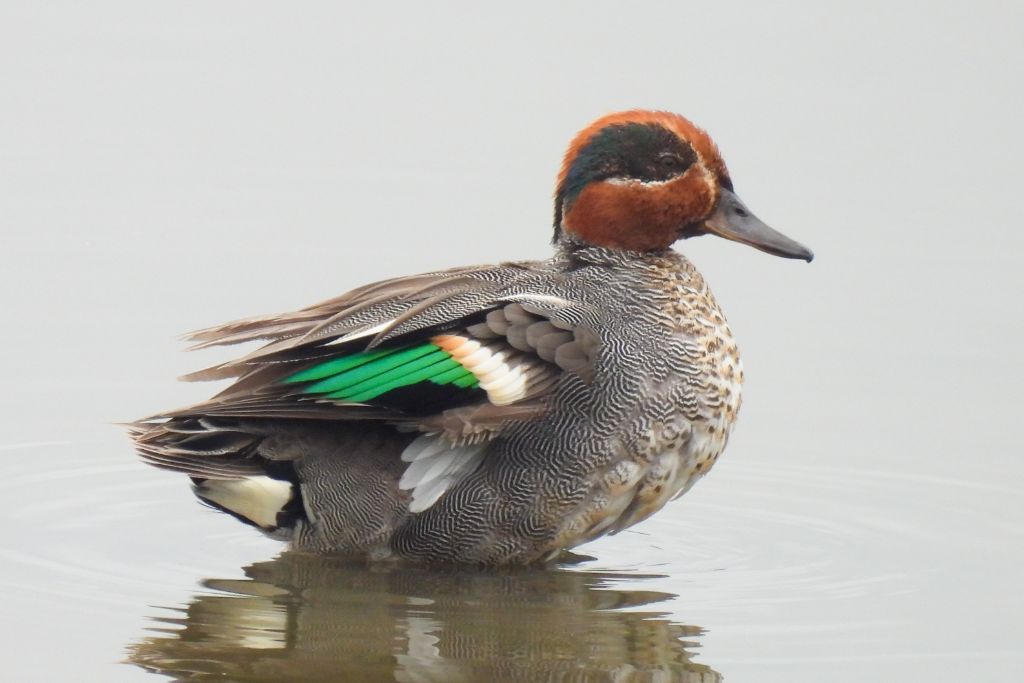
The green-winged teal catches the eye with bright emerald-green markings on its wings. This little duck proudly features a unique crescent-shaped white stripe along its side.
The male stands out with a warm cinnamon-colored head. The females sport a quieter, mottled brown plumage. A unique iridescent green speculum, or wing patch, unites them, making for a mesmerizing sight when they take flight.
Feeding on a diet of seeds, aquatic plants, and insects, it prefers shallow waters. Come the breeding season, these ducks carefully pick hiding spots in tall grass. Good news on the conservation front – their numbers are holding steady.
This avian is widespread in North America and doesn’t stick to just one place. It can be found in various spots, like ponds and marshes. These ducks are good at adapting to different homes.
They play a helpful role in forests by cycling nutrients. By foraging on aquatic plants and insects, they help maintain a balanced ecosystem. Their feeding habits, like stirring up sediment, promote overall water quality.
Green-Breasted Mango
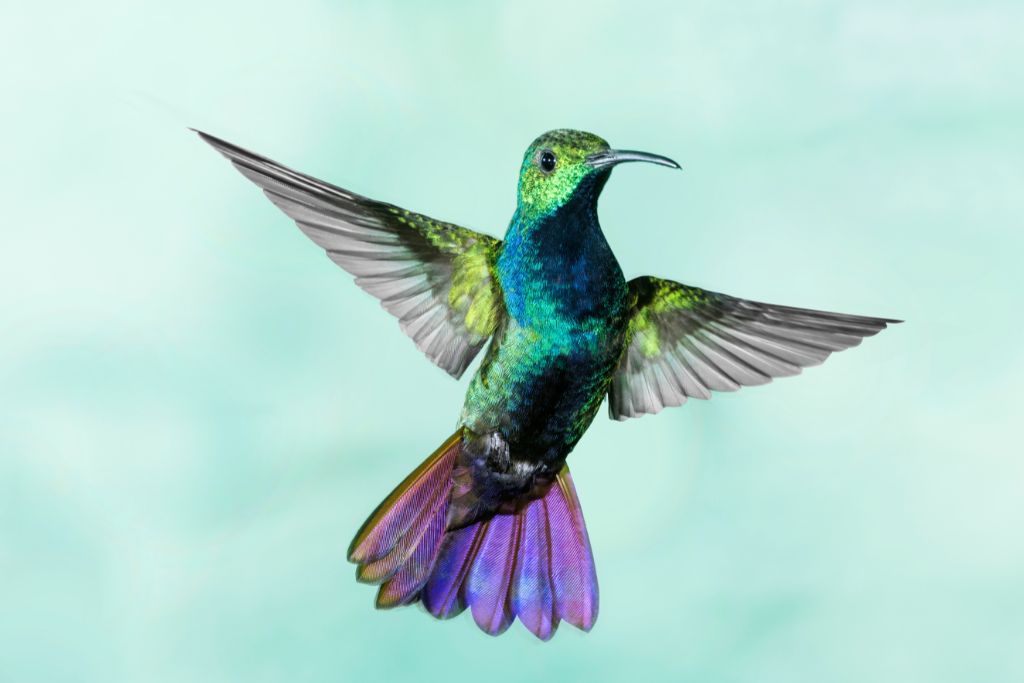
Wrapped in vibrant green feathers that shine like metal, the green-breasted mango stands out among birds. The males stand out mainly because of their shiny throats. These throats display hues ranging from emerald to turquoise, making them quite eye-catching.
These birds are small in size. Their tails split slightly at the end. Together, these features make them a charming sight amidst the thick leaves of the forest.
These delicate birds mainly enjoy nectar, the central part of their diet. They also indulge in small insects and spiders for a varied menu.
The males perform a complex aerial courtship in the breeding season, flaunting their agility. Females build tiny cup-shaped nests in hidden spots, often high in the forest canopy.
Despite being captivating, the green-breasted mango is in danger. The risk comes from habitat loss and degradation, pushing them into the near-threatened category.
These remarkable birds primarily inhabit the tropical forests of Central and South America. Their range extends from Mexico to Ecuador and Brazil.
They play a vital role in the ecosystem as effective pollinators. Pollen sticks to their heads and beaks when they sip nectar from flowers. This helps in the critical process of cross-pollination, which is crucial for the reproduction of many plant species.
Green-Cheeked Amazon Parrot
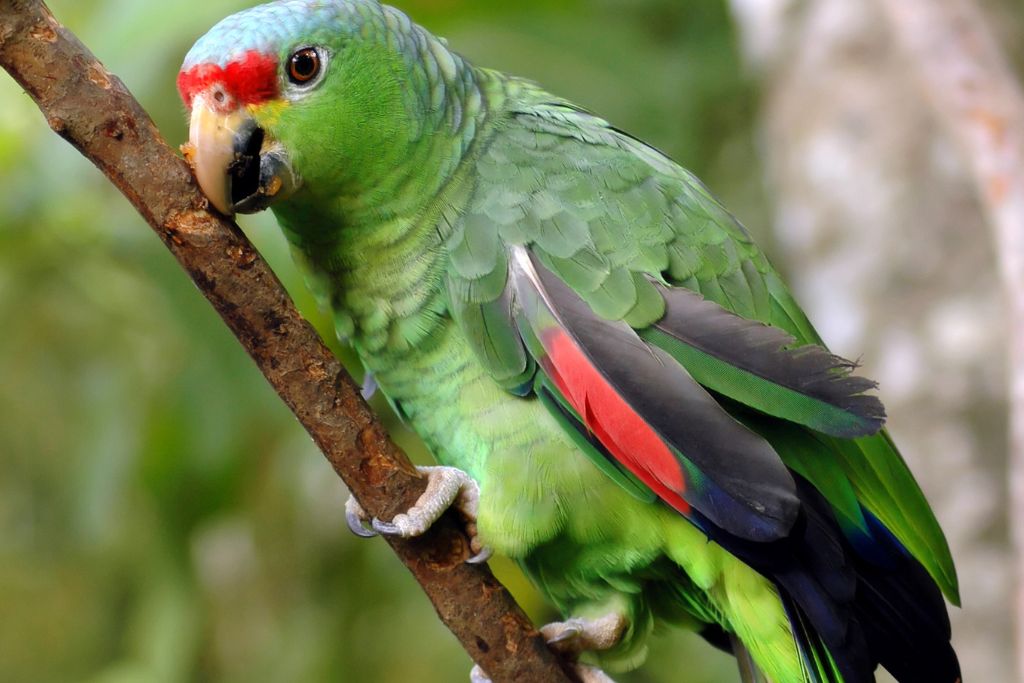
The green-cheeked Amazon parrot is known for its lively and beautiful appearance. Its body shines in bright emerald green. It features a playful touch of cherry red on its crown, smoothly transitioning into its distinct green cheeks. This adds a warm burst of color to its appearance.
The splash of blue on its wings and tail makes it even more attention-grabbing, creating a vivid combination. The parrot’s eyes are expressive, framed in white, showing intelligence and curiosity.
In terms of food, these parrots are not picky eaters. Their diet is a wholesome mix of fruits, nuts, seeds, and leafy greens. As devoted partners, green-cheeked Amazons form strong bonds during courtship rituals.
Their breeding habits involve cozy nesting spaces. Once a pair decides to start a family, the female lays a clutch of eggs, usually around 3 to 4.
Conservation-wise, these charming birds face challenges due to habitat loss and the pet trade. Fortunately, efforts are being made to protect their habitats and manage the pet trade, helping improve their conservation status.
Originating from the untamed landscapes of South America, this species flourishes within rainforests, playing a pivotal role in maintaining the intricate harmony of the ecosystem.
Their presence echoes through the foliage, playing a vital role as seed dispersers. As they traverse the treetops, these parrots spread seeds, nurturing the growth of diverse plant life.
Final Thoughts
Green birds display a remarkable variety of features and abilities that highlight the marvels of bird life. Whether it’s the agile green broadbill in Southeast Asia or the majestic quetzal in the cloud forests of Central America, each species demonstrates distinct colors, behaviors, and roles in their habitats.
The vibrant green feathers serve a practical purpose beyond looking pretty. These green feathers are a product of evolution. They aid the birds in surviving and thriving in various environments.
Keeping their homes safe, supporting conservation, and making people aware of their challenges are vital. By appreciating and protecting green birds, we become guardians of the balance that keeps our planet full of diverse and fantastic life.
FAQs
Why are Some Birds Green?
Some birds are green due to pigments in their feathers called carotenoids. These pigments are obtained through their diet, and green coloration often serves as camouflage in their natural environment.
Are Green Birds Rare?
Green is a relatively common color in birds, and many species exhibit green plumage. However, the intensity and prevalence of green can vary among bird species. Some birds may have only small green patches, while others may be predominantly green.
What Kind of Bird is a Green Bird?
Many bird species can have green plumage. Examples include the green parrot, green jay, green-winged teal, and various species of parakeets and lorikeets. Green coloration is often a result of pigments like carotenoids in their feathers.

